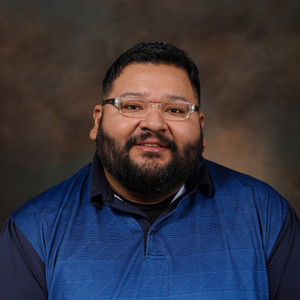KINGSVILLE (April 29, 2024) — Texas A&M University-Kingsville (TAMUK) associate professor of environmental engineering Dr. Lucy Mar Camacho was issued a United States Patent in March for a method that recovers rare earth elements (REE) by utilizing electrodialysis metathesis (EDM).
The patent is titled Recovery of Rare Earth Metals and Other Metals from Natural Liquid Sources by Electrodialysis Metathesis and was invented by Camacho and TAMUK PhD student Mohammad U. Shafiq.
“This is a patent that was started more than four years ago,” Camacho said. “The importance of it is that it offers an alternative to access rare earth elements from a different source. The traditional sources are all minerals, solid rocks. With this patent, I will be able to access rare elements from liquids including sea water, geothermal water, produced water — any kind of natural solutions that may contain rare earth elements.”
The REE extracted helps in areas such as the energy and aerospace industry, as well as advancing technology used in devices such as cell phones and electric cars.
Currently, the U.S. imports 80% of its REE from China (the rest are also sourced from China through other countries), which has a large resource as well as the ability to refine them.
Camacho says the U.S. has plenty of resources for REE, but they have yet to be exploited as she estimates just three to four mines currently operating in the country.
The U.S. also does not yet have the ability to process the REEs after extraction, though the U.S. Department of Energy invested more than $28 million towards making that a reality in 2021.
That is where Camacho and Shafiq’s patent can make a true impact as the process separates minerals and REEs from water and converts them into usable materials such as oxides and salts.
While the process happens, the water is simultaneously being put through a cleaner desalination process that recovers minerals and REE from rich concentrated waste, reducing the amount of said waste going back into the original water source.
“The concentrate from the desalination is recovered through the electrochemical metathesis reaction,” Camacho said. “That helps do the desalination at the same time. When the enriched rare elements are being extracted, the water is being cleaned. You remove minerals and rare elements from water. Then, you continue with chemical steps to separate the rare earth elements because they come in groups depending on the source of the water. Once you separate them, you convert them into useful materials. There is still going to be waste, but it is minimal.”
Camacho said that any national liquid source can be put through the process and changes the idea that REE are only found in solid form.
Now, Camacho and Shafiq will continue their research and aim to demonstrate the now-patented process.
“It’s important that the U.S. Patent Office recognized this,” Camacho said. “It motivates us to continue doing research and making the research a reality. It is not just leaving the research in the lab; it is about bringing it outside. In terms of research, this is an end step. In terms of commercialization, this is a first step. We have a company interested in exploring the idea further and implementing the process.
“The next step will be a demonstration prior to commercialization,” Camacho added. “For that, we will need funding. I will continue to seek funding from the National Science Foundation or any organization that supports advancing the commercialization of patented ideas.”
-TAMUK-

